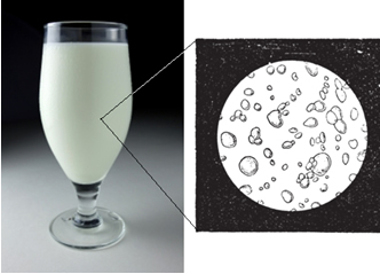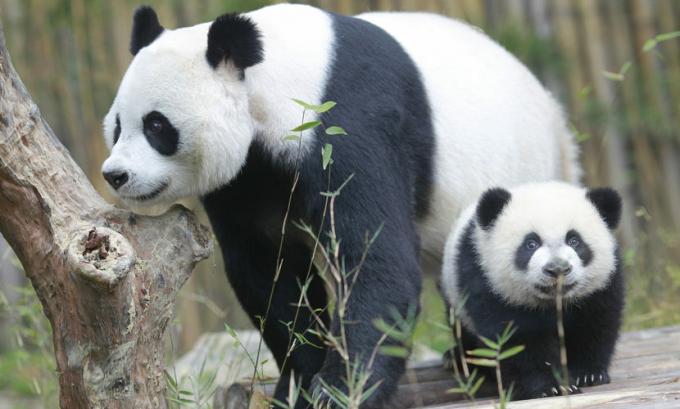Have you ever wondered why is milk white? The answer to this question depends on understanding two factors: what are the colors and what is the composition of the milk.
In the text Because the sky is blue? it was explained that colors are electromagnetic waves, and each has a different wavelength. This text also showed that if we make the white light that comes from the sun pass through a prism, it will be decomposed into all the colors that make up the rainbow, as shown in the following figure:

Decomposition of white sunlight when passing through a prism
This shows us that, in fact, the color white is formed by the union of the following colors: red, orange, yellow, green, blue, indigo and violet. Thus, when light falls on an object, it absorbs some wavelengths, that is, some colors, and reflects others. The color it reflects will be what we see. Thus, we can say that milk does not absorb any color, but reflects all, so we see the white color.
But which substances present in milk are responsible for reflecting all the colors, forming white?
Milk is basically composed of water, lactose, fat, proteins, mineral substances, organic acids and other substances in smaller quantities.are the fats and colloidal particles of casein and calcium phosphate, as well as some proteins present in minor amount in milk, such as albumin (lactalbumin) and globulin (lactoglobulin), which cause the dispersion of White light.
But as you may already know, fat doesn't mix with water. So how come we don't see it in milk?
It is because the fat is in the form of small globules that are dispersed throughout the entire length of the milk. They are so small that with the naked eye we cannot see them. But with a microscope, you can see the fat, as shown in the following image:

Milk fat viewed through a microscope
However, if these fat globules come together, it is possible to see them without the help of a microscope. So, to keep the fat globules well separated, the milk goes through a process called homogenization, which serves exactly to make it appear to have a uniform appearance, all White.
This is achieved because the fats are passed through a very small hole that breaks these globules, making them even more tiny and causing them to remain suspended in the milk. This homogenization process makes the milk even whiter, as more fat globules reflect and scatter light.
Some milks have a slightly yellowish color due to the presence of the carotene pigment. Cases of milk with abnormal colors, such as red and blue, are a result of microbial development.
By Jennifer Fogaça
Graduated in Chemistry



